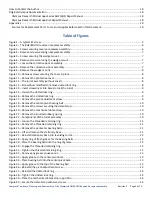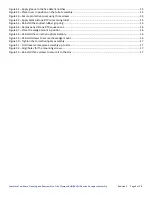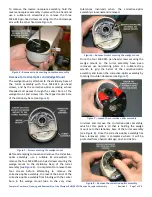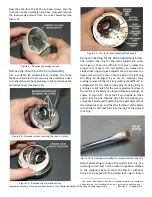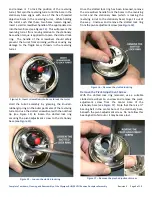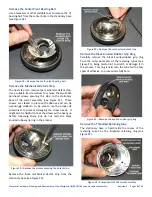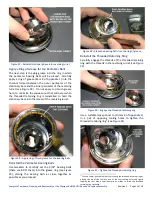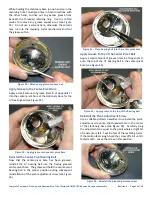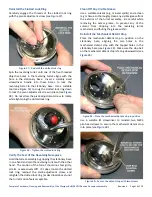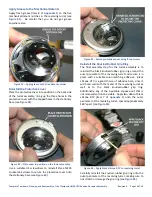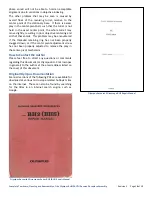
Complete Teardown, Cleaning, and Reassembly of the Olympus BHSU/BHTU Reverse Nosepiece Assembly
Revision 3
Page 6 of 19
polish remover), diethyl ether, heptane, hexane,
mineral spirits, turpentine, and xylene. Of the solvents
listed, acetone fingernail polish remover is available in
most grocery or department stores. Look for a
fingernail polish remover that is labeled as 100%
acetone. Mineral spirits will work well for Plastilube®
Brake Grease.
Safety Considerations with Solvents
Regardless of whichever solvent is chosen, make sure
that adequate ventilation is present during the cleaning
process, and that any necessary personal protective
equipment is utilized to minimize exposure. Consult the
MSDS sheet before using any unfamiliar solvents. Many
of the solvents listed above are flammable, and their
vapors may represent an explosion hazard if
mishandled. Whichever solvents are chosen, be sure to
follow all manufa
cturer’s instructions and safety
precautions.
Solvent Compatibility with Parts and Finishes
Many solvents will damage the finish of painted
surfaces (isopropyl alcohol or 409 Cleaner may be safely
used to clean most painted surfaces) or will dissolve or
damage plastic parts. Do not allow untested solvents to
contact any plastic parts or any painted surfaces.
Before using a solvent to clean plastic parts or painted
surfaces, test a small amount of the solvent in an
inconspicuous area (such as inside a plastic knob) to
ensure compatibility with the plastic parts or painted
surfaces. Never use xylene to clean nylon parts, as
xylene dissolves nylon. Isopropyl alcohol and
trichloroethylene will cause swelling of nylon due to
solvent absorption. The list of solvents generally
considered safe for nylon includes acetone, diethyl
ether, heptane, mineral spirits, naphthalene, and
turpentine.
Before Starting with the Overhaul
Before beginning the removal and teardown of the
reverse nosepiece assembly, perform the following.
Remove the Objectives from the Nosepiece
Carefully remove all the objectives from the revolving
nosepiece turret and store them someplace where they
will be protected from physical damage, dust, and
debris.
Label Parts for Identification and Reassembly
During the teardown of the reverse nosepiece
assembly, be sure to bag and tag the various parts to
prevent their loss and to facilitate their proper
identification during reassembly.
The BHSU/BHTU Reverse Nosepiece Assembly
The reverse nosepiece assembly used on the BHSU and
BHTU stands consists of a five-position turret assembly,
a wedge mount, and an accompanying corrective-optics
assembly. The turret assembly is the same one used on
the BH2-5RE revolving modular nosepiece assembly for
the BHS and BHT stands, but rather than utilizing a
machined dovetail slide to mount the turret assembly
onto the stand, the BHSU/BHTU version includes a
wedge mount to secure the turret assembly onto the
stand in reverse orientation, and a corrective-optics
assembly
to correct for the difference in tube length
introduced with the incorporation of the wedge mount
(see
).
Figure 2
–
The BHSU/BHTU reverse nosepiece assembly
Servicing the Reverse Nosepiece Assembly
The following sections detail the disassembly, cleaning,
and reassembly of the BHSU/BHTU reverse nosepiece
assembly.
Remove the Reverse Nosepiece Assembly
The reverse nosepiece assembly, which must be
removed from the arm as a complete assembly, is
secured to the top of the pillar arm by three M2.6X14
pan-head screws (see
).
Figure 3
–
Screws securing reverse nosepiece assembly



